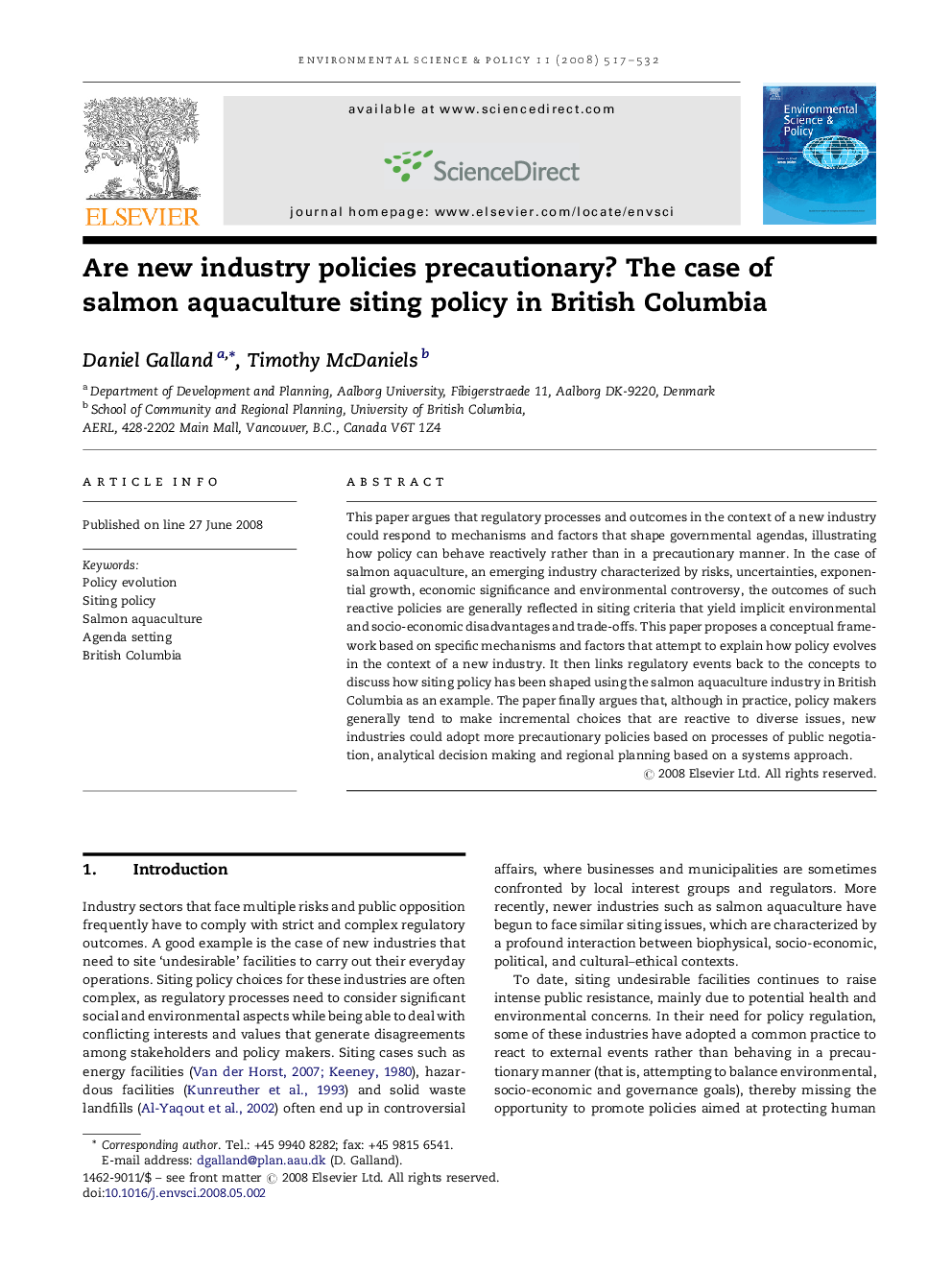| Article ID | Journal | Published Year | Pages | File Type |
|---|---|---|---|---|
| 1054180 | Environmental Science & Policy | 2008 | 16 Pages |
This paper argues that regulatory processes and outcomes in the context of a new industry could respond to mechanisms and factors that shape governmental agendas, illustrating how policy can behave reactively rather than in a precautionary manner. In the case of salmon aquaculture, an emerging industry characterized by risks, uncertainties, exponential growth, economic significance and environmental controversy, the outcomes of such reactive policies are generally reflected in siting criteria that yield implicit environmental and socio-economic disadvantages and trade-offs. This paper proposes a conceptual framework based on specific mechanisms and factors that attempt to explain how policy evolves in the context of a new industry. It then links regulatory events back to the concepts to discuss how siting policy has been shaped using the salmon aquaculture industry in British Columbia as an example. The paper finally argues that, although in practice, policy makers generally tend to make incremental choices that are reactive to diverse issues, new industries could adopt more precautionary policies based on processes of public negotiation, analytical decision making and regional planning based on a systems approach.
